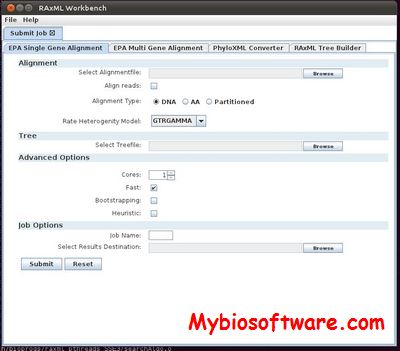tree-puzzle 5.3.rc16
:: DESCRIPTION
TREE-PUZZLE is a computer program to reconstruct phylogenetic trees from molecular sequence data by maximum likelihood. It implements a fast tree search algorithm, quartet puzzling, that allows analysis of large data sets and automatically assigns estimations of support to each internal branch. TREEPUZZLE also computes pairwise maximum likelihood distances as well as branch lengths for user specified trees. Branch lengths can be calculated with and without the molecular-clock assumption. In addition, TREE-PUZZLE o ers likelihood mapping, a method to investigate the support of a hypothesized internal branch without computing an overall tree and to visualize the phylogenetic content of a sequence alignment. TREE-PUZZLE also conducts a number of statistical tests on the data set (chi-square test for homogeneity of base composition, likelihood ratio to test the clock hypothesis, one and two-sided Kishino-Hasegawa test, Shimodaira-Hasegawa test, Expected Likelihood Weights). The models of substitution provided by TREE-PUZZLE are GTR, TN, HKY, F84, SH for nucleotides, Dayhoff, JTT, mtREV24, BLOSUM 62, VT, WAG for amino acids, and F81 for two-state data. Rate heterogeneity is modeled by a discrete Gamma distribution and by allowing invariable sites. The corresponding parameters (except for GTR) can be inferred from the data set.
::DEVELOPER
Heiko A. Schmidt & Arndt von Haeseler
:: SCREENSHOTS
N/A
:: REQUIREMENTS
:: DOWNLOAD
 tree-puzzle
tree-puzzle
:: MORE INFORMATION
Citation
Schmidt, H.A., K. Strimmer, M. Vingron, and A. von Haeseler (2002)
TREE-PUZZLE: maximum likelihood phylogenetic analysis using quartets and parallel computing.
Bioinformatics. 18:502-504.

